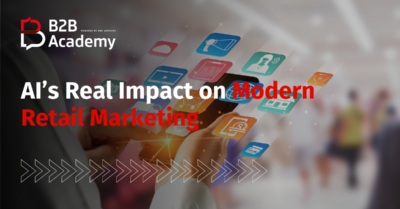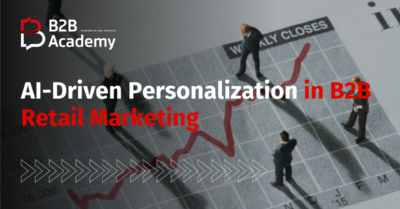Social media can build brand awareness, but without a strategy, it rarely drives leads or conversions. Instead, a well-designed social media marketing funnel ensures that your efforts go beyond engagement and contribute to actual business growth. In this article, we’ll break down the key stages of a high-performing social media funnel and how to implement it effectively.
What Is a Social Media Marketing Funnel?
A marketing funnel is the journey someone takes, from discovering your brand to handing over their hard-earned money. On social media, this journey isn’t linear. People jump in at different stages, get distracted by a video of a raccoon stealing cat food, and sometimes forget about you altogether.
That’s why your funnel needs to be strategic, engaging, and built to keep people moving forward—without feeling like an overly aggressive salesperson is chasing them.
The 3 Core Stages of a Social Media Marketing Funnel
Think of your funnel like dating (but with fewer awkward silences and no overpriced appetizers). You wouldn’t propose on the first date, right? You also wouldn’t expect someone to buy from you after seeing one LinkedIn post. Instead, you need to:
- Attract – Get their attention.
- Nurture – Build trust and keep them interested.
- Convert – Make it easy for them to take action.
Now, let’s break each stage down.
1. Attract: Stop the Scroll & Get Noticed
The first challenge? Making sure people actually see you. Social media platforms are designed to keep users engaged for as long as possible—but not necessarily with your content.
Your job is to stand out without resorting to clickbait. So, how do you do that?
- Know your audience: If you’re talking to B2B decision-makers, they probably don’t care about your “Monday Motivation” post. But they do care about industry insights, smart opinions, and solutions to their biggest headaches.
- Create content that solves problems: People aren’t searching for “best SaaS product ever”. They’re looking for “how to fix inefficient workflows” or “why my CRM feels like a black hole.” Speak their language.
- Use engaging formats: Short-form videos, carousels, and polls get more engagement than plain text. Test different styles and see what sticks.
- Post consistently: But not just for the sake of posting—quality over quantity. Ask yourself: Would I stop scrolling for this?
2. Nurture: Turn Interest into Trust
Great, you’ve caught someone’s attention. But here’s the kicker: attention doesn’t pay the bills. Now, you need to keep them interested long enough to build trust.
Here’s where many brands drop the ball. They either:
- Hit people with a sales pitch too soon
- Disappear after the initial engagement
Neither works. Instead, you need to:
- Engage, don’t broadcast: Social media is not a megaphone—it’s a conversation. Reply to comments, ask questions, and interact with your audience like a human (not a corporate robot).
- Offer value consistently: Webinars, case studies, and industry deep dives work well here. Give your audience something useful, and they’ll keep coming back.
- Use retargeting ads: Ever look at a product once and then see ads for it everywhere? If someone engages with your content, a well-placed ad can remind them why they were interested in the first place.
- Leverage social proof: Testimonials, case studies, and user-generated content help remove doubt. People trust other people more than they trust brands.
3. Convert: Make Buying (or Signing Up) a No-Brainer
This is where a lot of businesses get shy. You’ve done the hard work—now it’s time to ask for the sale (or demo, or sign-up, or whatever “conversion” means for you).
But remember: people don’t like feeling sold to, they like solving problems. Your job is to make taking the next step feel natural, not forced.
Here’s how:
- Create clear CTAs: No vague “learn more” links. Be specific: “Download the guide,” “Schedule a free demo,” or “Get your personalized strategy.”
- Make it easy: If your sign-up process requires five forms, a PDF download, and a carrier pigeon, people will leave. Reduce friction.
- Use urgency (but don’t be annoying): If you’re offering a time-sensitive deal or limited spots for an event, say so—but avoid exaggerated FOMO tactics.
- Track and optimize: Use analytics to see where people drop off in your funnel. If your landing page gets clicks but no conversions, something’s off.
4. Integrating AI: Work Smarter, Not Harder
Artificial intelligence isn’t just for sci-fi movies and questionable deepfake videos. When used correctly, AI can make your social media funnel run smoother and more efficiently, without replacing the human touch.
Here’s how AI can support your funnel at every stage:
Attract
- AI-powered content recommendations: Tools like ChatGPT and Jasper can generate post ideas, captions, and even blog outlines based on trending topics.
- Automated audience insights: AI can analyze engagement data to tell you which topics perform best and when your audience is most active.
- Smart scheduling: AI-driven platforms like Sprout Social and Hootsuite suggest the best times to post based on historical performance.
Nurture
- Chatbots and AI-driven messaging: Platforms like Drift and ManyChat can handle initial customer inquiries, answer FAQs, and qualify leads—without making people wait for a human response.
- AI-generated personalized content: AI can help tailor email sequences, social posts, and even ad creatives based on user behavior.
- Sentiment analysis: AI can monitor social conversations about your brand and industry, so you can jump in at the right time.
Convert
- AI-powered ad optimization: Facebook and LinkedIn ads use machine learning to improve targeting and performance over time.
- Predictive analytics: AI can analyze past behavior to predict which leads are most likely to convert, helping you prioritize your efforts.
- Automated follow-ups: AI-driven email sequences can nurture leads after they’ve engaged, keeping them in the loop without manual effort.
A well-built social media funnel isn’t about tricking people into buying—it’s about guiding them toward a decision they’re already considering.
That means:
- Providing real value at every stage
- Meeting your audience where they are
- Testing and tweaking until you find what works
If you’re looking for more hands-on insights for your specific industry, feel free to register for our upcoming free webinar: Automate Your Social Media Strategy with AI!





